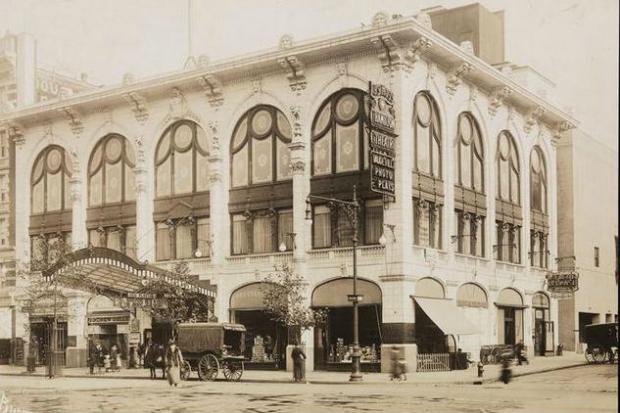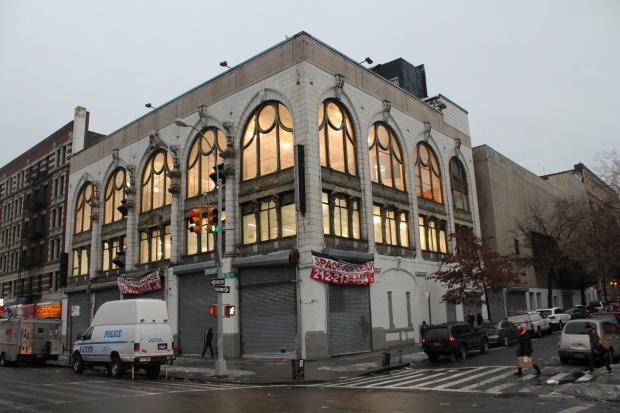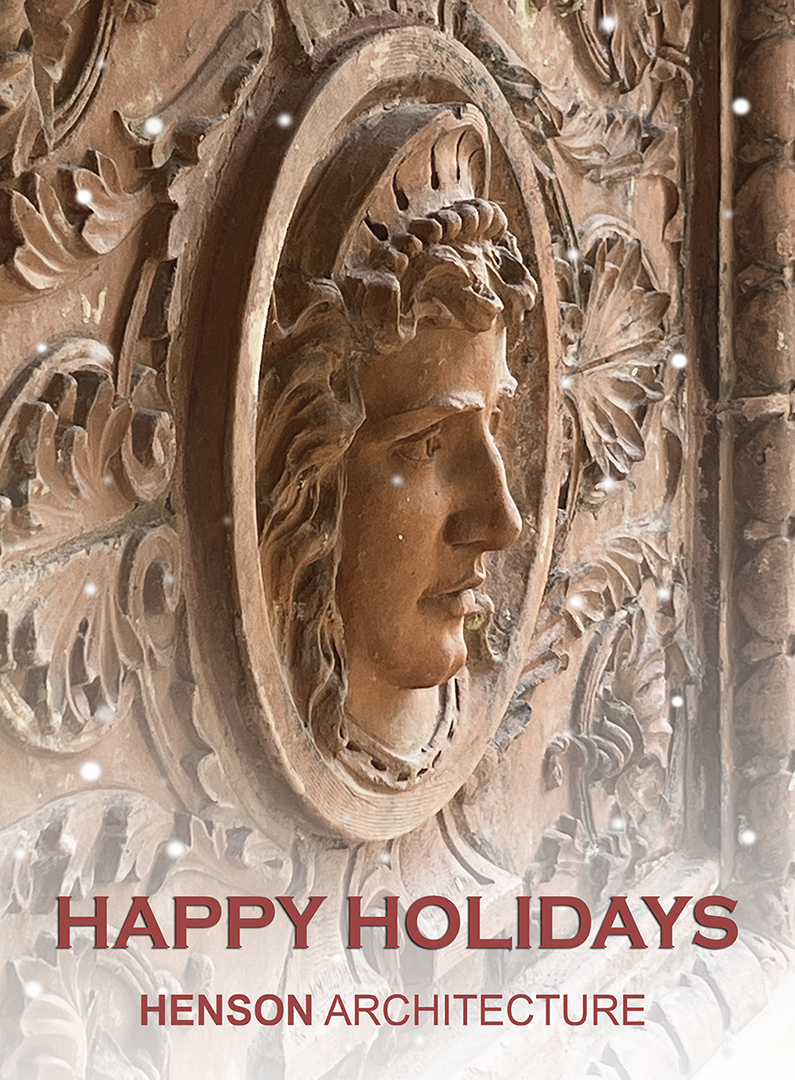The historic RKO Hamilton Theater may become luxury condos in exchange for the preservation and restoration of the interior theater as a community performance space.
The possible deal comes as the owner of the landmarked theater, Ashkenazy Acquisition Corporation, led by real estate mogul Ben Ashkenazy, sought support from Community Board 9 for its application with the Landmarks Preservation Commission to build a connector between the two buildings that make up the Hamilton Heights theater at Broadway and 146th Street.
At first, Ashkenazy, who purchased the building along with another building in Washington Heights for $19 million in 2012, considered creating retail space for a company such as Burlington Coat Factory in the former theater, which showed its last movie in 1958.
But the board and Harlem historian Michael Henry Adams proposed that the developer build condominiums on top of the theater instead, as a way of financing the preservation of the historic interior. “Since the luxury towers are going to come anyway, we might as well get something back for having to suffer these banal glass boxes,” said Adams, author of “Harlem, Lost and Found.”
Recent zoning changes to West Harlem make the construction of a tower there more feasible. The interior of the building was never landmarked. “What we want to see happen with this theater is to see it redeveloped and become a community resource,” said Arnold Boatner, chairman of CB 9’s Landmarks and Parks Committee. “There are a large number of performance artists in our community who don’t have space.” The Rev. Georgiette Morgan-Thomas, chairwoman of CB9, said the board would even support luxury housing at the site— often a contentious issue at Harlem community boards concerned about rapid gentrification.
The community board voted to support the new connector between the theater buildings, but with an unusually high number of abstentions. “If they say they will restore the theater, we will have to bend if they do all market-rate housing,” said Morgan-Thomas. “This is about creating something that could be here 20 to 30 years from now.”
The Landmarks Preservation Commission, which designated the exterior of the building as a historic landmark in 2000, approved an application last Tuesday to add an addition between the two buildings that will be set back from the street and clad in brick to match the rear building. That addition is necessary to make the building usable, whether it ultimately becomes a retail or residential building. One of the factors in the commission’s approval was that the building once had a passageway connecting the two structures.
Jeffrey A. Chester, an attorney with Gonzalez Saggio Harlan-LLP who represents Ashkenazy Acquisition Corporation, called the residential plan an ambitious one that might be difficult to pull off for a few reasons. Ashkenazy Acquisition Corporation is primarily a commercial real estate company. The company has extensive commercial holdings with multiple buildings on Madison Avenue as well as Faneuil Hall Marketplace in Boston. The company’s initial proposal was to renovate the interior of the building for retail and leave the landmarked exterior alone. If the company decides to pursue residential development, it would likely have to partner with another firm.
Secondly, restoring the damaged theater would be quite expensive. The entire bottom floor of seats is missing and the building has peeling paint and graffiti after suffering years of water leaks and neglect. “The owner is looking at it but what they have proposed is extraordinarily ambitious and would require variances and approval from landmarks beyond what we initially considered,” Chester said. “The question remains: Is there a viable market to keep that theater busy enough to pay for itself?
I don’t know if a nonprofit theater group will pay the freight to make this work.” Yuien Chin, of the Hamilton Heights-West Harlem Community Preservation Organization, said she envisions a dynamic organization running the space who would be able to create the high-level programming and financial partnerships necessary to make it self-sufficient. “I don’t think it’s a situation of ‘build it and they will come,'” said Chin. “The demand for a performance and visual arts space, not to mention a banquet hall for dances and receptions, is already here.”
The now-decrepit building and theater is worth saving because of its history, said Adams. Commissioned by vaudeville operator Benjamin S. Moss and theater developer Solomon Brill, the neo-Renaissance Revival-style structure was designed by Thomas Lamb, a prolific theater and cinema designer, and was completed in 1913. Vaudeville acts performed at the theater, using the space between the two buildings to bring in sets. In 1928, the theater was sold and became one of New York City’s first movie houses.
Movies ceased to be shown at the 1,800-seat theater in 1958 and the space was then used as a disco, church and arena. The lobby of the theater was last used as a retail space for the El Mundo department store, which left a year and a half ago. The structure has been vacant since.
Matt Lambros, a Brooklyn photographer who gained access to the theater to take pictures in 2011 for his website After the Final Curtain, said he was pleasantly surprised to hear discussion about restoring the theater. “I assumed that one was going to go down,” said Lambros, who has traveled the country photographing shuttered theaters. “It’s still grand and in pretty good shape, so it should be easier to save than most old theaters.”
Adams said there used to be several Lamb-built theaters on Harlem’s west side but most have not survived. “These places survived close to 100 years and one by one they have all been wiped out,” said Adams. “The Hamilton is one of the most beautiful Thomas Lamb theaters ever built and it should not be allowed to be swept away.”









